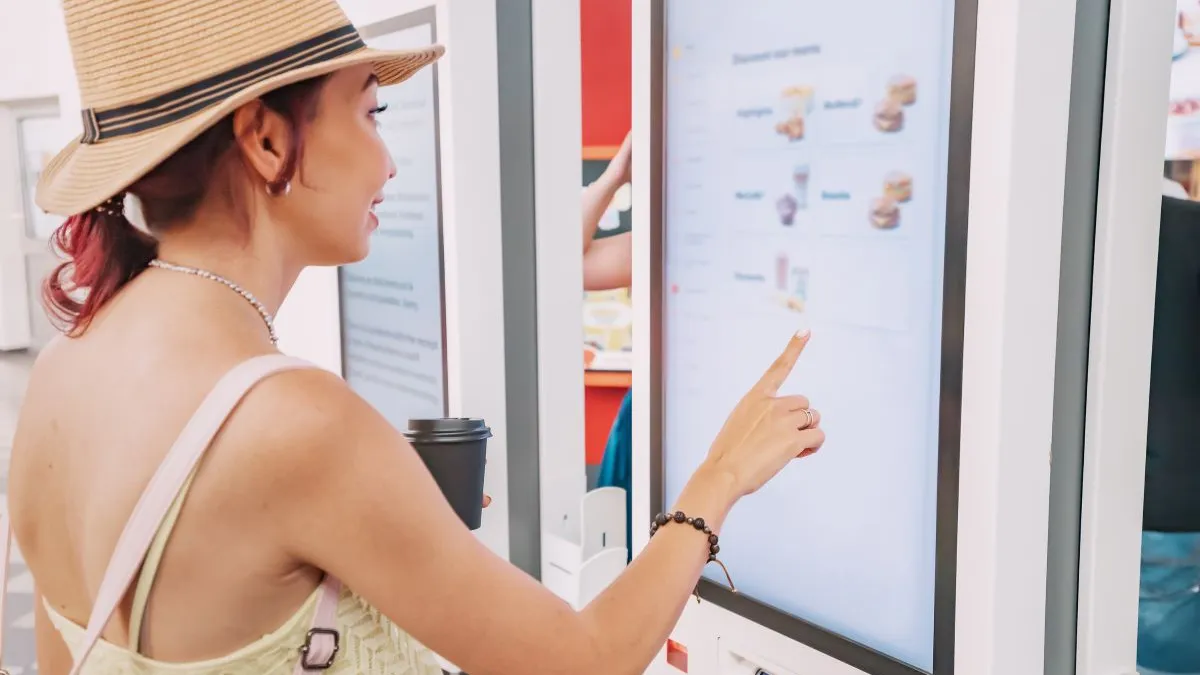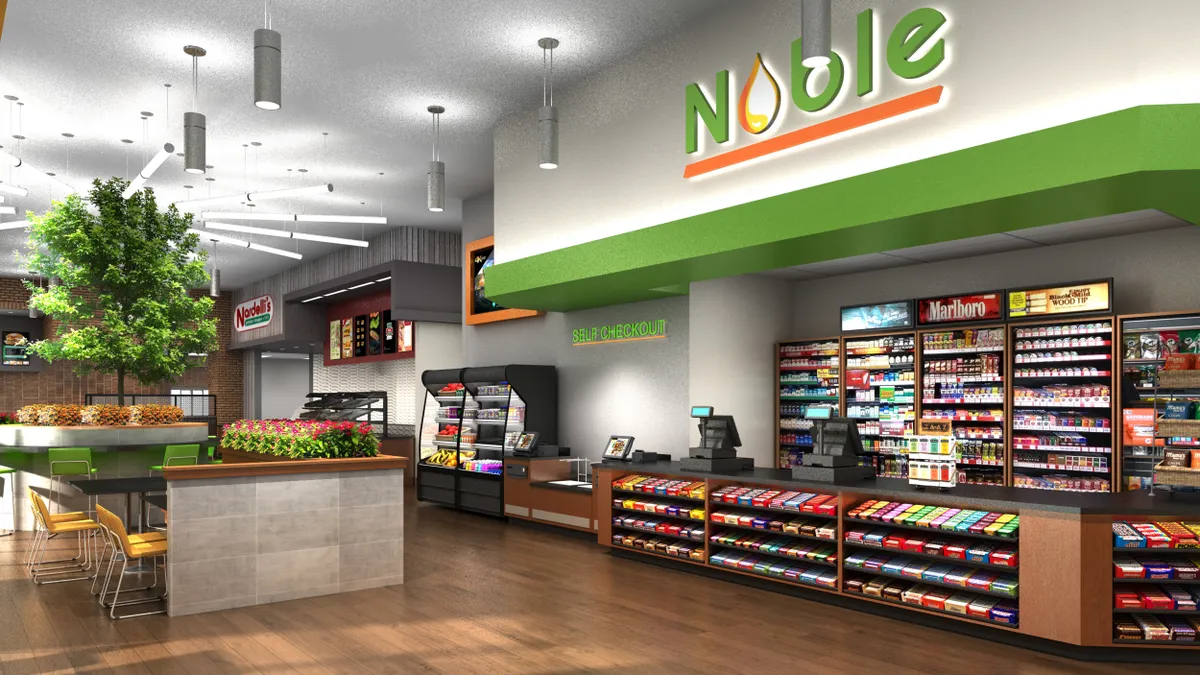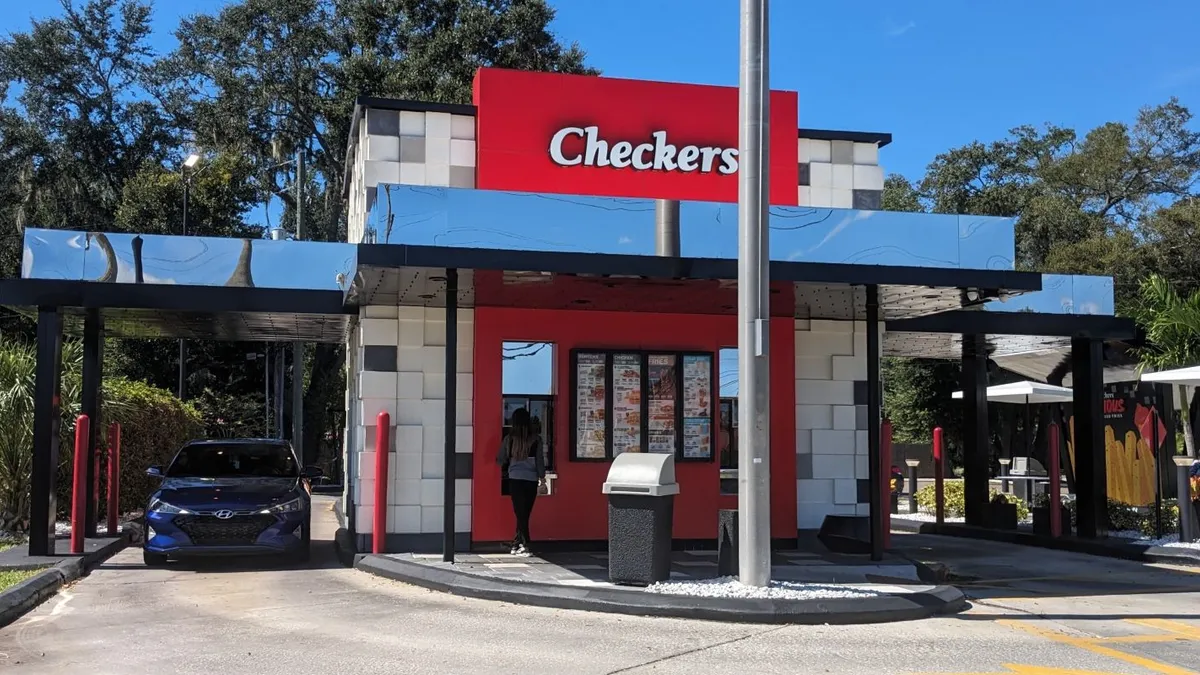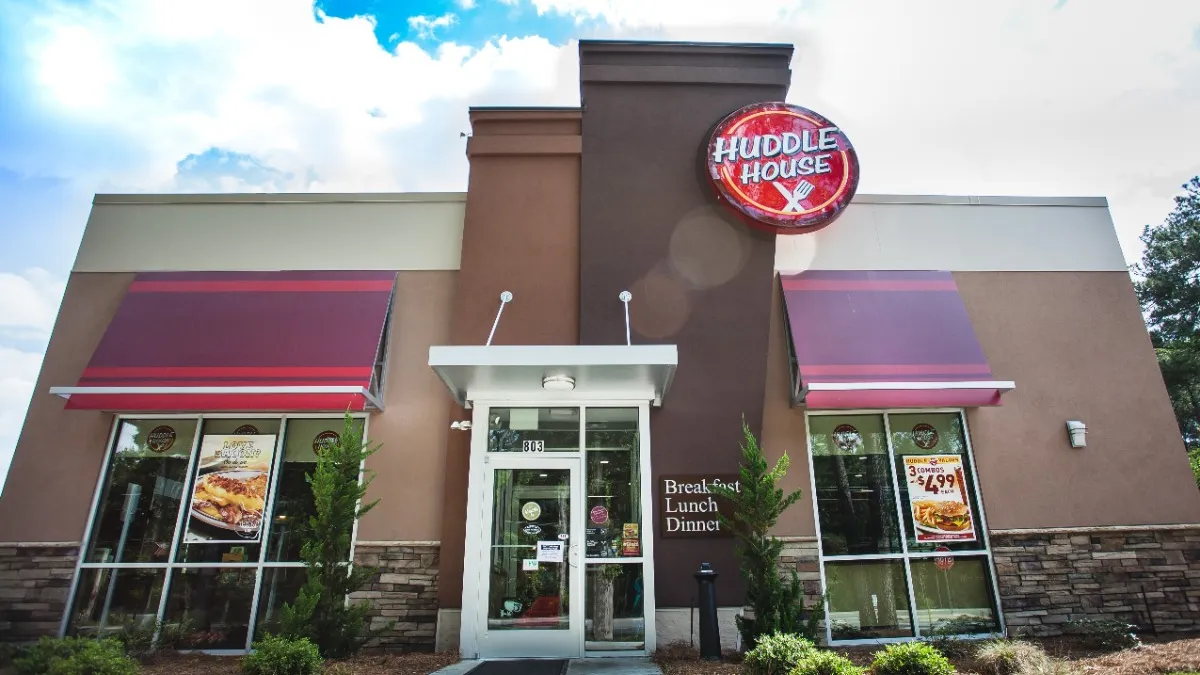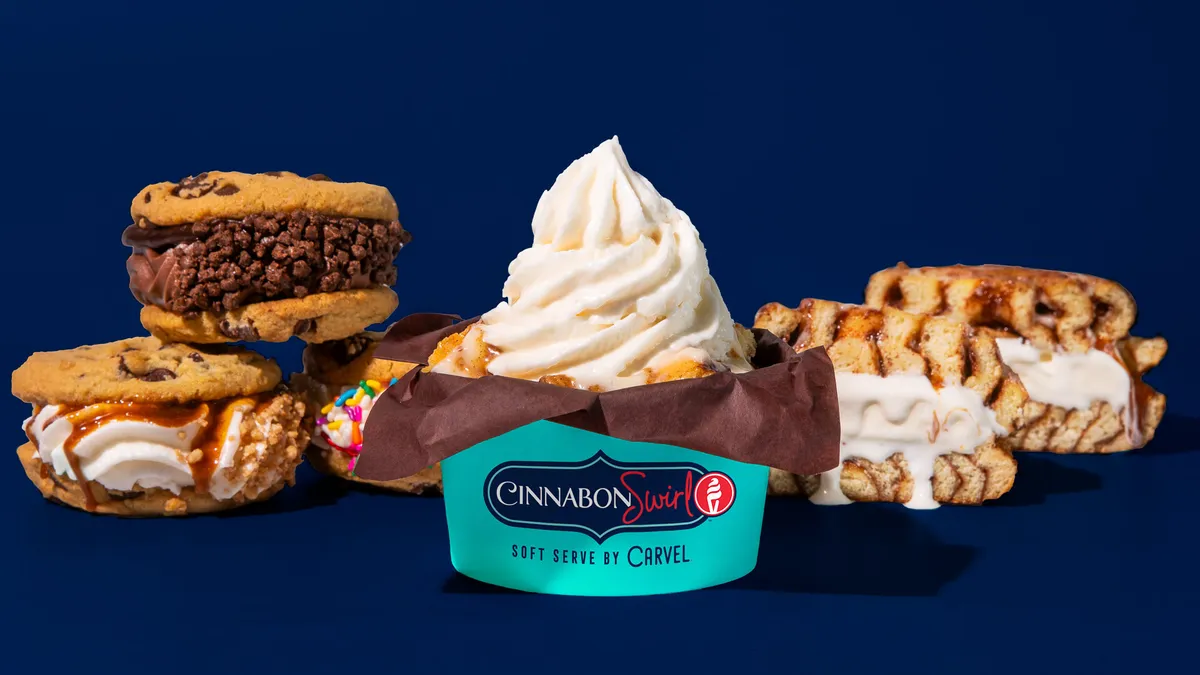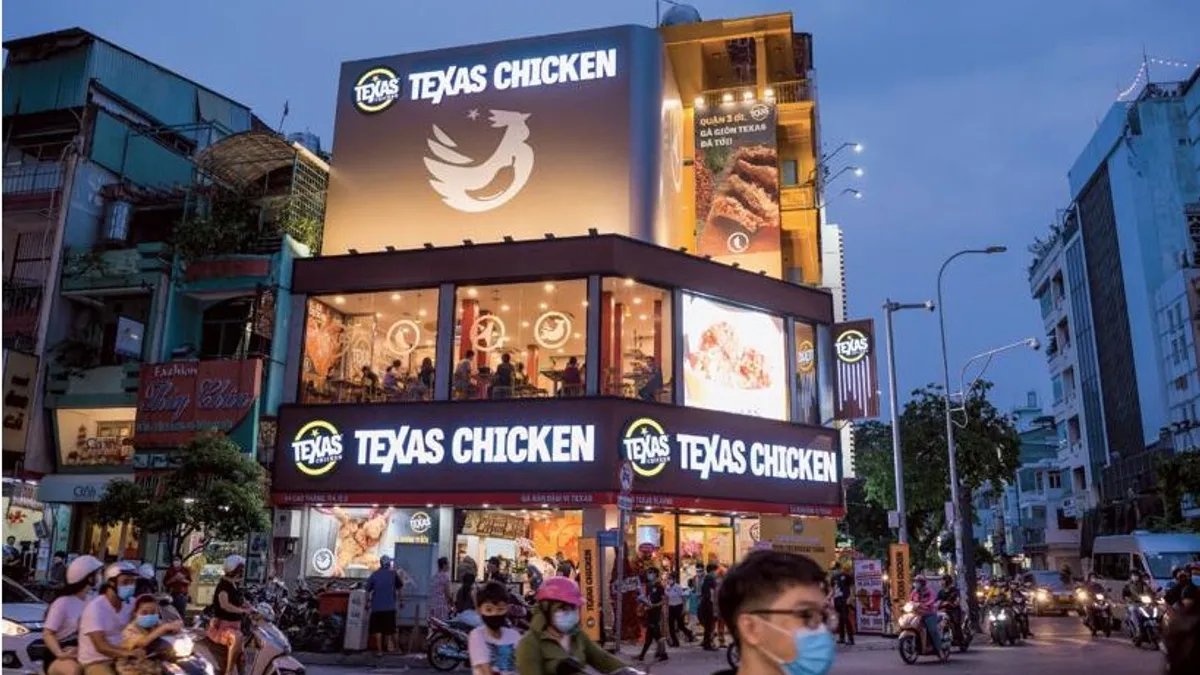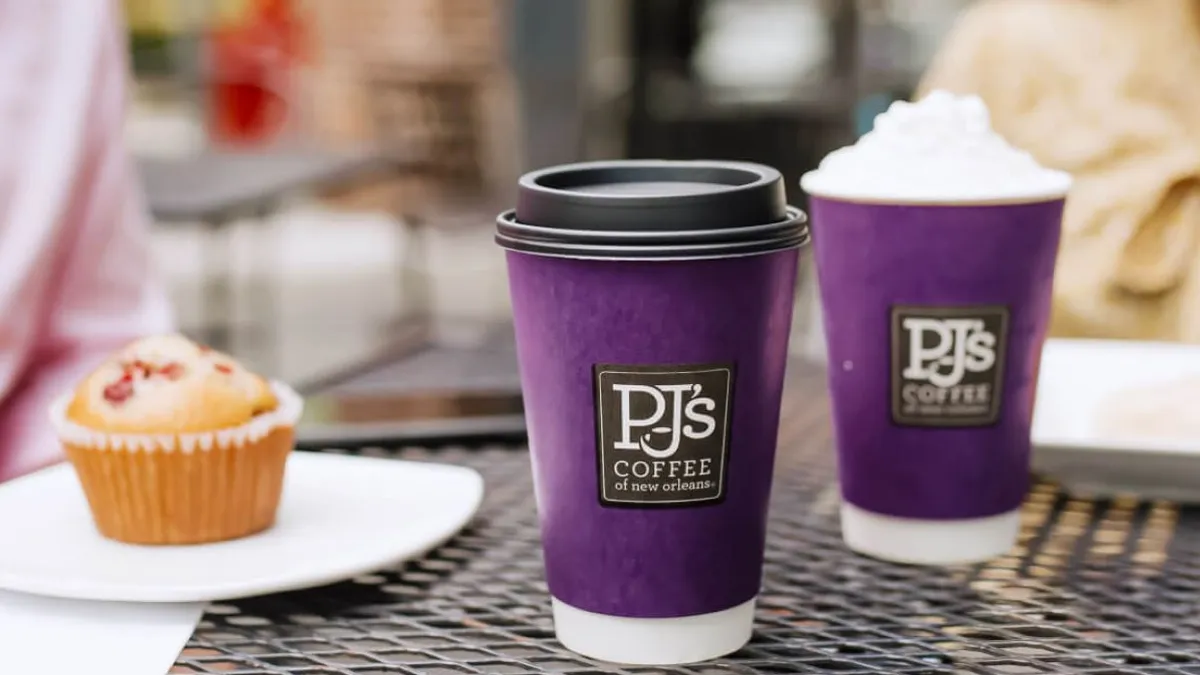A few years ago, Burger King started to add kiosks to its U.S. restaurants, but few customers used them, Restaurant Brands International CEO Josh Kobza said during the company’s November earnings call.
“I think that condition has really changed,” Kobza said. “We’ve started to pilot in more and more of our Burger King company restaurants and we’re seeing tremendous results.”
A majority of Burger King’s in-restaurant tickets are going through the kiosks, he said. Company-owned restaurants that feature kiosks saw 28% of quarterly digital sales come through the equipment. Kobza expects a faster rollout of kiosks, and the technology is already in 50% in international restaurants.
Burger King joins other chains like Shake Shack, KFC, Taco Bell and El Pollo Loco that are doubling down on kiosks. Restaurants that feature kiosks tend to have higher average tickets, and the machines help fast food chains redeploy labor so employees can focus on preparing food and lessens the need for front counter staff to take orders.
Over one-third of consumers said they would like restaurants to have more kiosks available, and 42% of diners have already used kiosks, according to Tillster’s Phygital Index Report Q3 2023. The top reasons customers said they use kiosks include: No rush to order (44%), ease of menu exploration (41%) and ability to view all the menu options (40%). Fifty-nine percent of users have been surprised by new items and customization options while using kiosks, per the report.
“It really transforms the guest experience and team member experience, especially when you go all-in on kiosks and convert the whole restaurant,” Kobza said. Guests get more time to order and there is less stress on customers and workers, he said. When guests have more time to order, that translates to higher order values.
Carrols Restaurant Group, Burger King’s largest U.S. franchisee with over 1,000 units, is in the process of adding kiosks to 250 restaurants over the next four months, with most funded by Burger King’s Royal Reset program, Carrols CEO and President Deborah Derby said during the company’s November earnings call. RBI invested $400 million in its Burger King U.S. system as part of its Reclaim the Flame program last year. About $150 million of that investment targeted marketing, dubbed Fuel the Flame, and $250 million funding restaurant upgrades and remodels, dubbed the Royal Reset.
“While Burger King is still early in the testing and adoption process, we’re encouraged by the results that they have seen thus far,” Derby said.
Shake Shack has been adding kiosks for several years and the technology now accounts for over half of in-restaurant sales, Shake Shack CFO Katie Fogertey said during the company’s November earnings call. Kiosk sales were up 140 basis points in Q3 year over year.
“Kiosk is our highest margin channel and we remain very pleased with the at least high-single digit checklist we’re seeing with this order mode versus traditional cashier sales in the Shack,” Fogertey said.
Shake Shack is also testing new features that can help upsell at kiosks. Shake Shack originally tested kiosks in 2017, when it opened its first cashierless store, but briefly abandoned them after facing backlash. They revisited kiosks in 2018 and began installing them in stores alongside traditional front counter staff, originally targeting markets with high labor costs.
“We still think we’re early days here and really kind of leveraging the full potential of upsell through this digital order mode,” Fogertey said. “And how we can start to leverage guest data over the long term through that channel.”
Shake Shack is planning to improve a number of variables that impact customer usage of kiosks, such as the location of the tech within the store — to guarantee the kiosks are easily accessible — Fogertey said.
El Pollo Loco is in the early stages of testing kiosks, and the chain expanded the pilot to 20 company-owned locations in early Q4, El Pollo Loco Interim President and CEO Maria Hollandsworth said during the company’s November earnings call.
“To date, our test results have been very encouraging, resulting in reduced restaurant-level labor hours per day. Additionally, the adoption by consumers has been terrific and more seamless than we originally envisioned,” Hollandsworth said.
The chain now plans to roll out kiosks more quickly starting in January, and should finish rollout sometime in the mid-year of 2024, El Pollo Loco CFO Ira Fils said, adding that timing depends on how soon it can receive the equipment.
Yum Brands sees kiosk implementation as an “exciting area of growth,” Yum CFO Christopher Turner said during the company’s November earnings call. Kiosks are now in nearly 40% of KFC restaurants outside of China, all of Taco Bell’s U.S. locations, excluding licensed stores, and nearly 70% of Habit restaurants, he said. The company expects a 20-point increase in kiosk penetration for KFC restaurants outside of China and to reach a “vast majority of stores by the end of 2026,” he said.
“Kiosks not only drive a higher check compared to our traditional front counter, but also drive higher margins through operational efficiencies and generate new opportunities to leverage customer data and create personalized ordering experiences,” Turner said.



